Related Research Articles

In Gallo-Roman religion, Ancamna was a goddess worshipped particularly in the valley of the river Moselle. She was commemorated at Trier and Ripsdorf as the consort of Lenus Mars, and at Möhn as the consort of Mars Smertulitanus. At Trier, altars were set up in honour of Lenus Mars, Ancamna and the genii of various pagi of the Treveri, giving the impression of Lenus Mars and Ancamna as tribal protectors honoured in an officially organized cult. Among the few statuettes left as votive offerings at the sanctuary of Mars Smertulitanus and Ancamna at Möhn is one of a genius cucullatus like those offered to the Xulsigiae at the Lenus Mars temple complex in Trier.

In Gallo-Roman religion, Loucetios was a Gallic god known from the Rhine-Moselle region, where he was identified with the Roman Mars. Scholars have interpreted his name to mean ‘lightning’. Mars Loucetius was worshipped alongside the goddess Nemetona.

Nemetona, or 'she of the sacred grove', is a Celtic goddess with roots in northeastern Gaul. She is thought to have been the eponymous deity of the Germano-Celtic people known as the Nemetes; evidence of her veneration is found in their former territory along the Middle Rhine as well in the Altbachtal sanctuary in present-day Trier, Germany. She is also attested in Bath, England, where an altar to her was dedicated by a man of the Gallic Treveri people.

In Gallo-Roman religion, Smertrios or Smertrius was a god of war worshipped in Gaul and Noricum. In Roman times he was equated with Mars. His name contains the same root as that of the goddess Rosmerta and may mean "The Purveyor" or "The Provider", a title rather than a true name. Smertulitanus may be a variant name for the same god.
In Romano-British culture and Germanic polytheism, the Alaisiagae were a quartet of Celtic and Germanic goddesses deifying victory.
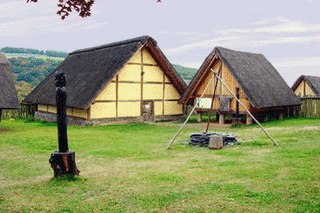
The Treveri or Treviri were a Celtic tribe of the Belgae group who inhabited the lower valley of the Moselle from around 150 BCE, if not earlier, until their displacement by the Franks. Their domain lay within the southern fringes of the Silva Arduenna, a part of the vast Silva Carbonaria, in what are now Luxembourg, southeastern Belgium and western Germany; its centre was the city of Trier, to which the Treveri give their name. Celtic in language, according to Tacitus they claimed Germanic descent. They possibly contained both Gallic and Germanic influences.
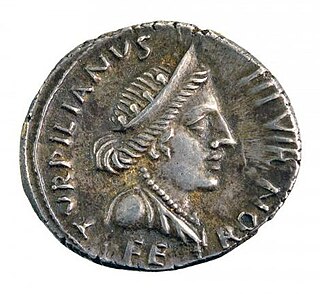
In ancient Roman religion, Feronia was a goddess associated with wildlife, fertility, health, and abundance. As the goddess who granted freedom to slaves or civil rights to the most humble part of society, she was especially honored among plebeians and freedmen. Her festival, the Feroniae, was November 13 during the Ludi Plebeii, in conjunction with Fortuna Primigenia; both were goddesses of Praeneste.

The Capitoline Triad was a group of three deities who were worshipped in ancient Roman religion in an elaborate temple on Rome's Capitoline Hill. It comprised Jupiter, Juno and Minerva. The triad held a central place in the public religion of Rome.
In ancient Celtic religion, Sulevia was a goddess worshipped in Gaul, Britain, and Galicia, very often in the plural forms Suleviae or (dative) Sule(v)is. Dedications to Sulevia(e) are attested in about forty inscriptions, distributed quite widely in the Celtic world, but with particular concentrations in Noricum, among the Helvetii, along the Rhine, and also in Rome. Jufer and Luginbühl distinguish the Suleviae from another group of plural Celtic goddesses, the Matres, and interpret the name Suleviae as meaning "those who govern well". The Suleviae have been identified in one inscription with the Junones, but mostly with the Matres, for example on an inscription from Roman Colchester, as well as on most of the inscriptions from Rome. The Colchester inscription reads:

Gallo-Roman religion is a fusion of the traditional religious practices of the Gauls, who were originally Celtic speakers, and the Roman and Hellenistic religions introduced to the region under Roman Imperial rule. It was the result of selective acculturation.
Icovellauna was a Celtic goddess worshiped in Gaul. Her places of worship included an octagonal temple at Le Sablon in Metz, originally built over a spring, from which five inscriptions dedicated to her have been recovered, and Trier, where Icovellauna was honored in an inscription in the Altbachtal temple complex. Both of these places lie in the valley of the river Moselle of eastern Gaul in what are now Lorraine in France and Rhineland-Palatinate in Germany. One such inscription was, somewhat unusually, inscribed on a copper tablet in Roman cursive letters.
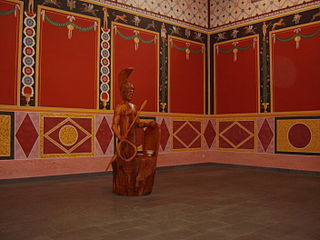
Lenus was a Celtic healing god worshipped mainly in eastern Gaul, where he was almost always identified with the Roman god Mars. He was an important god of the Treveri tribe, who had large sanctuaries at medicinal springs at Trier and the Martberg by Pommern in what is now Germany. Two dedications to him are also known from southwestern Britain. Edith Wightman characterizes him as “one of the best examples of a Teutates, or god of the people, equated with Mars—protector of the tribe in battle, but also [...] bestower of health and general good fortune” (p. 211). His sanctuary ‘Am Irminenwingert’ at Trier had a large temple, baths, smaller shrines and a theatre; that on the Martberg also included a large variety of buildings, probably including rooms for health-seeking pilgrims to stay. Despite his associations with healing, Lenus Mars is depicted classically as a warrior with Corinthian helmet in a bronze statuette from the Martberg.
Mars Iovantucarus was a Celtic god who was associated with the Treveran healer-god Lenus Mars at his sanctuary at Trier. The name reflects the deity's function as a protector of youth, and the temple was visited by pilgrims who often brought with them images of children, often depicting as holding pet birds as offerings to the god. At Tholey, also in Treveran territory, ‘Iovantucarus’ was also used as an epithet of Mercury.
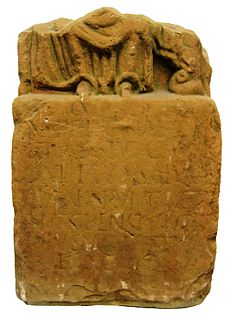
Ritona is a Celtic goddess chiefly venerated in the land of the Treveri in what is now Germany. Her cult is attested at Pachten and at Trier, where she "had a carefully built little temple" in the Altbachtal complex. Ritona's temple was one of several in the Altbachtal to include exedrae and courtyards that may have been used to prepare ritual banquets and/or to place offerings. At Pachten her temple also had a theatre, presumably used for performances of a religious nature.

In ancient Roman religion and myth, Mars was the god of war and also an agricultural guardian, a combination characteristic of early Rome. He was the son of Jupiter and Juno, and he was the most prominent of the military gods in the religion of the Roman army. Most of his festivals were held in March, the month named for him, and in October, which began the season for military campaigning and ended the season for farming.
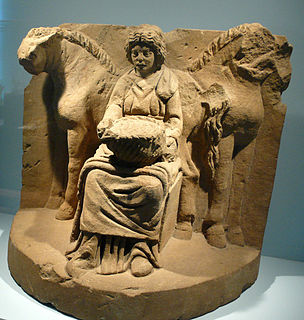
The gods and goddesses of the pre-Christian Celtic peoples are known from a variety of sources, including ancient places of worship, statues, engravings, cult objects and place or personal names. The ancient Celts appear to have had a pantheon of deities comparable to others in Indo-European religion, each linked to aspects of life and the natural world. By a process of syncretism, after the Roman conquest of Celtic areas, these became associated with their Roman equivalents, and their worship continued until Christianization. Pre-Roman Celtic art produced few images of deities, and these are hard to identify, lacking inscriptions, but in the post-conquest period many more images were made, some with inscriptions naming the deity. Most of the specific information we have therefore comes from Latin writers and the archaeology of the post-conquest period. More tentatively, links can be made between ancient Celtic deities and figures in early medieval Irish and Welsh literature, although all these works were produced well after Christianization.
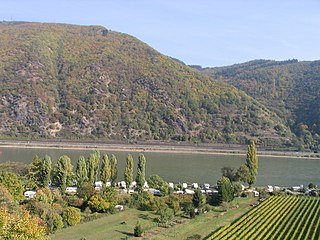
The Aresaces were Belgic tribe. They were closely related to, and probably originally part of, the Treveri. They inhabited the left bank of the Rhine in the Mainz-Bingen area, which was once the easternmost part of Treveran territory.
The religious element is difficult to identify in Mycenaean Greece, especially as regards archaeological sites, where it remains very problematic to pick out a place of worship with certainty. John Chadwick points out that at least six centuries lie between the earliest presence of Proto-Greek speakers in Hellas and the earliest inscriptions in the Mycenaean script known as Linear B, during which concepts and practices will have fused with indigenous Pre-Greek beliefs, and—if cultural influences in material culture reflect influences in religious beliefs—with Minoan religion. As for these texts, the few lists of offerings that give names of gods as recipients of goods reveal nothing about religious practices, and there is no other surviving literature.

Yarovit is a god of war worshipped by Polabian Slavs associated with fertility and agriculture. In interpretatio romana, he was compared to Roman god of war Mars. His feast probably fell on April 15 or May 10 - sowing festival. His symbol was a golden shield that was kept in his temple. Because of the identical first part of the name he can be associated with the East Slavic god Yarilo, and because of the semantic similarity with Svetovit, some scholars suggest that both gods are related.
Edith Mary Wightman FSA was a British ancient historian and archaeologist. She was Assistant-Professor and then Professor at McMaster University (1969–1983). Wightman was best known for her studies Roman Trier and Gallia Belgica.
References
- ↑ Godchecker.com entry
- ↑ Edith Mary Wightman (1970). Roman Trier and the Treveri. Rupert Hart-Davis, London.
- ↑ Kraftorte und Kultplätze in Rheinland Pfalz, Deutschland. (in German)
- ↑ Carlie Sigel. "Exhibition Paper for the Genius Cucullatus." Archived August 4, 2007, at the Wayback Machine
- ↑ AE 1924, 00016, retrieved 29 March 2008.

